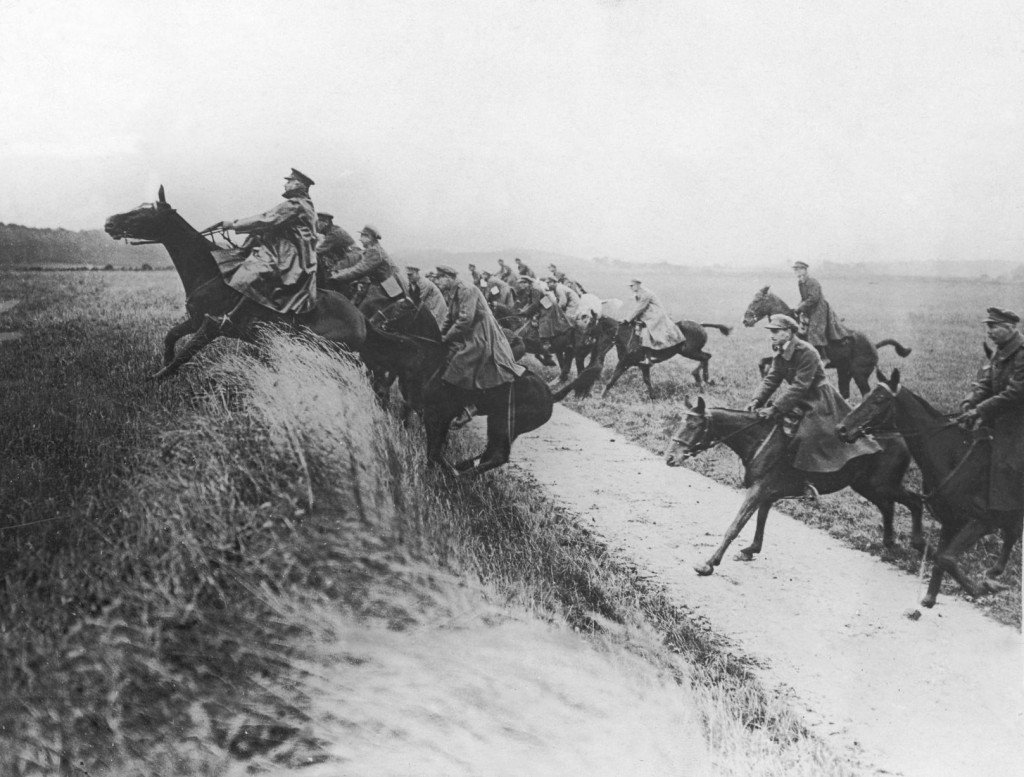
There were significant changes to the Cavalry of the @USArmy during the Interwar Years, but the full effects of these changes were not felt until the Army got new equipment and began to rapidly expand as we got ready to enter World War II.
“Mounted reconnaissance developments reflected the impact of mechanization through the emergence of principles developed by the 7th Cavalry Brigade (Mechanized).” @MastersManeuver 

More emphasis was being placed on the need to “fight for information” and this emphasis marked the greatest difference between the Horse Cavalry Officers and the newer Mechanized Cavalry Officers. 

The Army Doctrine at the time was associated with both, Horse and Mechanized Cavalry, and that Doctrine displayed a preference for stealthy reconnaissance and the avoidance of detection. @doctrinatrix_C2 @PatDonahoeArmy @TedMartin1775 @CavRTK @OldCavDude 

Mechanized Cavalry, however, was quickly showing a preference for equipping Scouts with the “means to survive chance encounters with hostile forces.”
“The creation of the Armored Force decentralized responsibility for reconnaissance development and ensured the expression of both viewpoints within the Army.” 

But for a long time, Cavalry was the real “mobile arm” of the @USArmy. The horse offered superior mobility when compared to soldiers on foot.
The Cavalry had a rather broad mission set that included attack, defend, exploitation, pursuit, recon, security, delay, raid, and harassment operations. And Doctrine required that we have the ability to perform all of these missions both mounted on horseback and dismounted.
Cavalry was characterized by rapid action and decisiveness, but the units traditionally lacked the ability to engage in sustained combat.
Lucky for them, that was not their purpose.
Lucky for them, that was not their purpose.
The Cavalry units were expected to use their superior mobility to conduct recon and security operations ahead of their friendly forces, and once they found the enemy, they were to remain in contact to provide a steady flow of information regarding hostile forces. 

Information drives decision making. The Cavalry could shape the nature and circumstances in which a battle would occur. 

In their security duties, Cavalry would provide early warning and help protect units against surprise. 

When we got to WWI, things like trenches, mines, and barbed wire, plus the increased lethality associated with machineguns and mortars, and the increased use of artillery and aircraft, all showed that Horse Cavalry were a bit more vulnerable now. 

Mounted operations became the exception rather than the rule. When the AEF went to the Western Front, only a small contingent of Cavalry went with them. 

Aircraft provided substantially more reconnaissance, and dismounted patrols were put to greater use than horses. This made it more challenging for Cavalry to maintain their traditionally defined role and difficult to redefine their role after the First World War. 

With the increased motorization of armies, tanks and trucks and other vehicles were becoming commonplace and this was reflected in Doctrine and training. The likelihood of encountering tanks on a battlefield was much higher and horses were not quite up to that task. 

For reconnaissance assets to be effective, they have to be able to move faster than their parent formations and in WWI and during the Interwar Years, parent formations were understood to be on foot. 

Leadership among the Horse Cavalry units “launched an aggressive campaign to promote their Branch, drawing unfavorable comparisons between the terrain sensitivity of vehicles and the yet unmatched tactical mobility of horse organizations.”
A scout mounted on horseback was still easier to conceal and it was still much easier for a scout to go from mounted to dismounted more quickly with a much lower noise signature – all of which are important to recon. 

Logistics tended to favor horses over vehicles, which was an argument used by the Cavalry. “Horses could live off the land” while “vehicles needed fuel.”
Mechanized and motorized units were portrayed (in these pro-Horse Cav campaign efforts) as “brittle and dependent on highly favorable conditions for their effective employment” which contrasted with the relative agility and versatility of just sticking with horses. 

The Cavalry Journal naturally supported these efforts, printing articles that focused on important Cavalry contributions throughout history. Of course WWI coverage focused on theaters OTHER THAN the Western Front so as to depict Cavalry being put to good use.
There was some emphasis on the British Cavalry operating in the Middle East, incorporating principle characteristics of firepower and mobility that we associate with US Cavalry. (I think these are actually from an Australian unit @WarintheFuture ) 

These stories “demonstrated the Cavalry’s traditional ability to achieve desired results, with or without improved or modernized weaponry.” 

The British commander in Palestine, Field Marshall Edmund H. H. Allenby, wrote to the Cavalry Journal acknowledging the attention the journal had been giving his command. 

He defended the use of horse cavalry in all theaters including the Western Front, but he also advocated for experimenting with tanks, trucks, and armored cars, and he noted that aircraft had largely replaced Cavalry for long-range reconnaissance. 

This was not exactly helping the pro-Horse Cav argument 👀 but we will continue this story on Saturday.
If you're just tuning in or you've missed any of the previous threads, you can find them all saved on this account under ⚡️Moments or with this direct link twitter.com/i/events/13642…
• • •
Missing some Tweet in this thread? You can try to
force a refresh
























